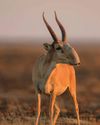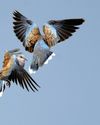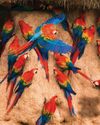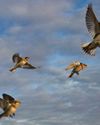
Stormy winter seas make for good beachcombing and while walking a strandline you might meet a member of the oldest species on Earth. This curious creature has an even more curious name: the ocean quahog, Arctica islandica. At first sight, though, it’s just a fairly plain, quite large and rounded clam. As with all clams, its shell is made up of two hinged parts called valves that protect the soft body parts inside. When fresh and alive, the ocean quahog is covered in a dark, skin-like layer called the periostracum, so it’s also known as a black or mahogany clam.
Older ocean quahogs can be over 5cm thick and 13cm long. Empty shells washed up on the shore are probably the closest most of us will get to seeing one, as the living animals bury themselves in sediment 4-500m underwater.
This story is from the November 2021 edition of BBC Wildlife.
Start your 7-day Magzter GOLD free trial to access thousands of curated premium stories, and 9,000+ magazines and newspapers.
Already a subscriber ? Sign In
This story is from the November 2021 edition of BBC Wildlife.
Start your 7-day Magzter GOLD free trial to access thousands of curated premium stories, and 9,000+ magazines and newspapers.
Already a subscriber? Sign In

SNAP-CHAT
Justin Gilligan on giant spider crabs and holding hands with an octopus

STEPPE CHANGE
Herds of saiga have returned to Kazakhstan, but there's a fine balance to tread

TREES FOR LIFE
Community is at the heart of conservation in the tropical forests of southern Belize

WHEN DOVES CRY
Turtle doves are now the UK's fastest declining bird species, but the RSPB is on a mission to save them

SURVIVAL OF THE CUTEST
We can't help being drawn to cute creatures, but our aesthetic preferences both help and hinder conservation

LIGHT ON THE NORTH
Spectacular images of Arctic foxes, reindeer and musk oxen reveal the wild beauty and diversity of Scandinavia

ROLLING IN THE DEEP
The super-sized crustacean that lives in the deepest, darkest ocean

LET'S GET TOGETHER
Clay licks deep in the Amazon explode in a riot of colour, with macaws the stars of the show

FEMALE OF THE SPECIES
To sponge or not to sponge? That is the question for the bottlenose dolphins (Tursiops aduncus) living in Shark Bay, Western Australia.

7 nature encounters for the month ahead
WITH NATURALIST AND AUTHOR BEN HOARE